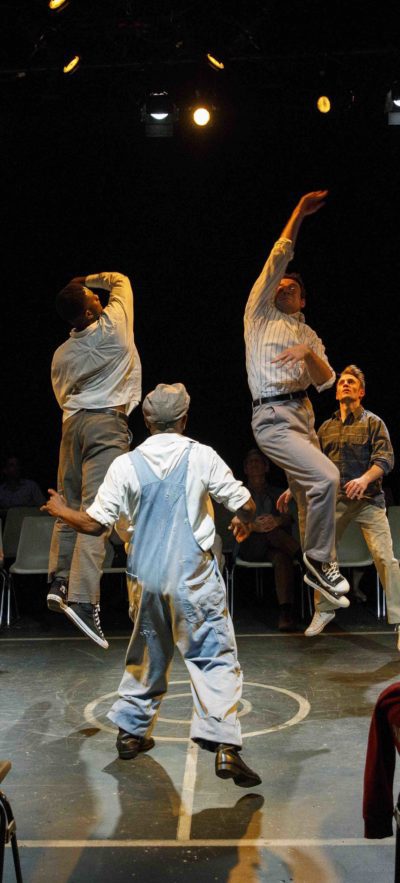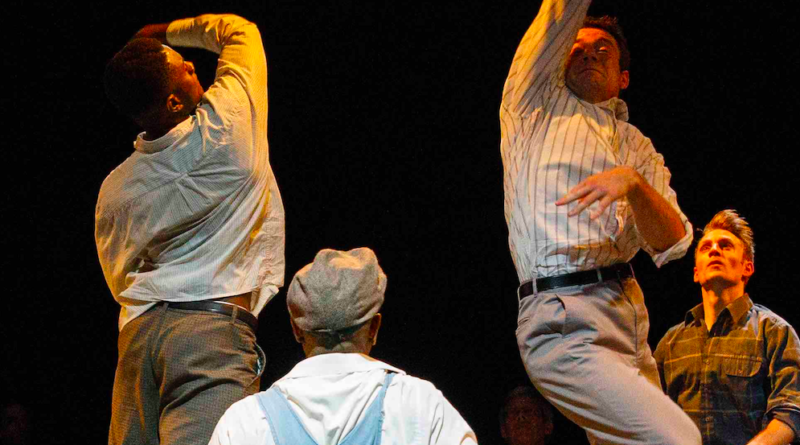INTERVIEW: Exploring the emotional violence of segregation in ‘Separate and Equal’

Separate and Equal, the new play from writer-director Seth Panitch, offers theatrical recollections inspired by the Birmingham Civil Rights Museum and the Oral History Project of the Birmingham Civil Rights Institute. In particular, Panitch has crafted an evening of emotional drama built on the theme of segregation in the world of basketball.
In the show, which is currently playing at New York City’s 59E59 Theaters, modern dance and basketball are molded together to tell the story of a forbidden game between black and white teenagers at the height of the Jim Crow era in the 1950s. These young athletes forge friendships and begin to see beyond the prejudice of their time period.
Recently, Hollywood Soapbox exchanged emails with Panitch about the play, which continues through Sept. 30 at the Midtown Manhattan venue. Questions and answers have been slightly edited for style.
Is the play’s plot inspired by a true story found in the Oral History Project at the Birmingham Civil Rights Museum?
The idea for the play was inspired by a trip to the Birmingham Civil Rights Museum. There was an open book detailing the racial codes of Jim Crow Alabama, including #597, which stated white and black children should not play together. I mused about what might happen if one side or the other (or both) broke that code. The background of the characters was definitely supported though my subsequent research at the Civil Rights Institute, but the plot itself is more closely related to what I see happening today.
Did you have to take some creative license to adapt the story for a stage?
The entire idea is creative license — people I interviewed from that time said that, in Birmingham, the penalties were so stiff that no teens would ever dare to break the color line on a public court.
What do you believe are the main takeaways from the audience’s perspective after experiencing Separate and Equal?
As I told the cast at our first rehearsal, we do not want to answer any of these questions; we want to hopefully ask them in a different way that might allow for a more richer experience for the audience. The play is abut possibility as much as it is about intolerance, and we hope the audience is able to connect with that hope, while at the same time, being shocked at how little things have changed in the last 67 years, in terms of our dialogue about race.
How are dance and actual sports playing interwoven into the narrative?
The dialogue between these young men occurs in the playing of the game, as well as through the natural crises and shared laughs that occur in sport. The game is a hybrid of basketball and dance throughout, so the playing of the game can be as expressive of the story as the scenes around it.
Given the many unfortunate news headlines about division and hatred still in existence, do you feel that some of the lessons from this time period still resonate in 2018?
Absolutely. Many of the issues we explore in the play still haunt us today. Even some of the language used back then to legitimize social segregation is consistently echoed in today’s world. I wish, of course, the play was not as timely as it is, but I fear there have been few times in our history when such an examination would not be timely. One of the focuses of the play concerns how adults continually look to the next generation to solve their problems, but steep them so deeply in the social structures of the past that they are unable to break free to an alternate future.
By John Soltes / Publisher / John@HollywoodSoapbox.com
Separate and Equal, written and directed by Seth Panitch, is currently playing at New York City’s 59E59 Theaters. Click here for more information and tickets.

